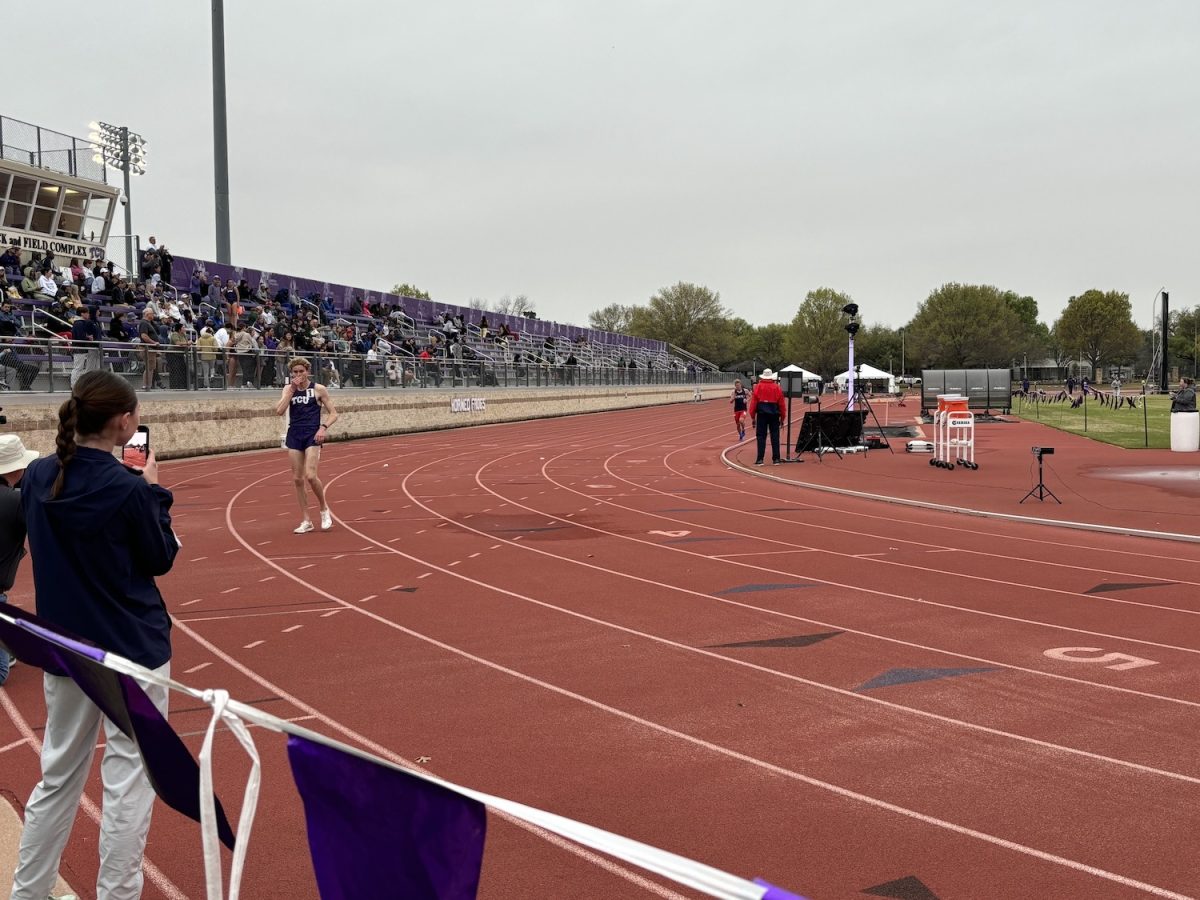Just off the foyer of the Sid W. Richardson Building is a piece of Mars. It’s one part of a vast collection of rocks from all across the galaxy that make up the Monnig Meteorite Gallery and Collection.
This stockpile of “rocks from space” is named after former Fort Worth businessman Oscar E. Monnig, who donated the collection to the university from 1978 to 1986.
Following Monnig’s death, a considerable amount of money from his estate was given to the TCU geology department for the express purpose of maintaining the collection.
That collection is made up of some 2,500 single pieces, which are pieces from about 1,800 meteorites, said Rhiannon Mayne, curator of the Monnig Meteorite Collection and Gallery.
These fragments are stored in a secure, recently renovated, climate controlled room known as “the vault.”
Mayne said the sheer number of meteorite samples is enough to make the collection one of the two largest located at an academic institution in the world.
The bragging rights for the largest collection is constantly in flux and depends on which university was the last to have purchased a meteorite, Mayne said. TCU and Arizona State University trade off on the top spot.
“It will vary…on who’s just bought something,” Mayne said. “If you look, ASU will say they’re the biggest. They’re very good at promoting themselves. They actually have a whole academic institute built up around their collection. We actually have a much better museum.”
Better than the Smithsonian
Showcasing a small percentage of the Monnig Collection is the Monnig Gallery, a world-class exhibit designed by the same firm who worked on the Hall of Geology, Gems and Minerals at the Smithsonian Institution.
Of the nearly 1,800 meteorites that make up the Monnig Collection, only about five percent of those are on display in the Monnig Gallery, Mayne said. When the gallery opened in 2003, the amount was closer to 10 percent, but as the collection has grown, the ratio has decreased.
Mayne, who worked at the Smithsonian Institution before coming to TCU, said she prefers the Monnig Gallery to other, larger natural history museum exhibits because of the Monnig Gallery’s specific focus on meteorites.
“If you went to the natural history museum in DC, I think they said that the average person spends less than five minutes in the meteorite gallery because there’s so much else to see,” Mayne said. “So it’s really nice to come to a campus and just immerse yourself.”
Mayne said the gallery defies expectations.
“A lot of people sort of expect this one room cobbled together exhibit, and they don’t realize that it’s really a world class exhibit,” Mayne said.
Outreach in the Fort Worth Community
Even though Mayne considers the Monnig Meteorite Collection a well-kept secret, that doesn’t stop her or the gallery educator from sharing the wonders of deep space with the Fort Worth community.
Nona Batiste, a retired teacher with 40 years of experience, is the gallery educator. Her responsibilities include giving tours of the gallery and handling community outreach – visiting area schools and community colleges to teach students about meteorites.
In particular, Batiste said she wants to visit inner city schools because they often don’t have the money to visit the gallery and would likely never experience it.
On these visits, she takes a sampling of meteorites from the collection along and lets students hold and feel them. Batiste said students are amazed because never have they seen anything older than the earth, let alone hold a rock from outer space.
Making sure the students are engaged and having fun is important, too, Batiste noted. That’s why on school visits students participate in various hands-on activities to keep their interest and attention.
“That way they can know what’s going on and really understand what’s happening,” Batiste said.
One activity – created by Batiste – has students pretend they are the various planets that make up the solar system while others pretend they are asteroids. Batiste said they then “crash” into each other, to demonstrate how meteorites collide with planets.
Batiste said that engaging in community outreach, specifically with inner-city students, is one of her favorite parts of the job because she can make a difference in students’ lives.
“It makes them aspire to something greater than they are,” Batiste said.



